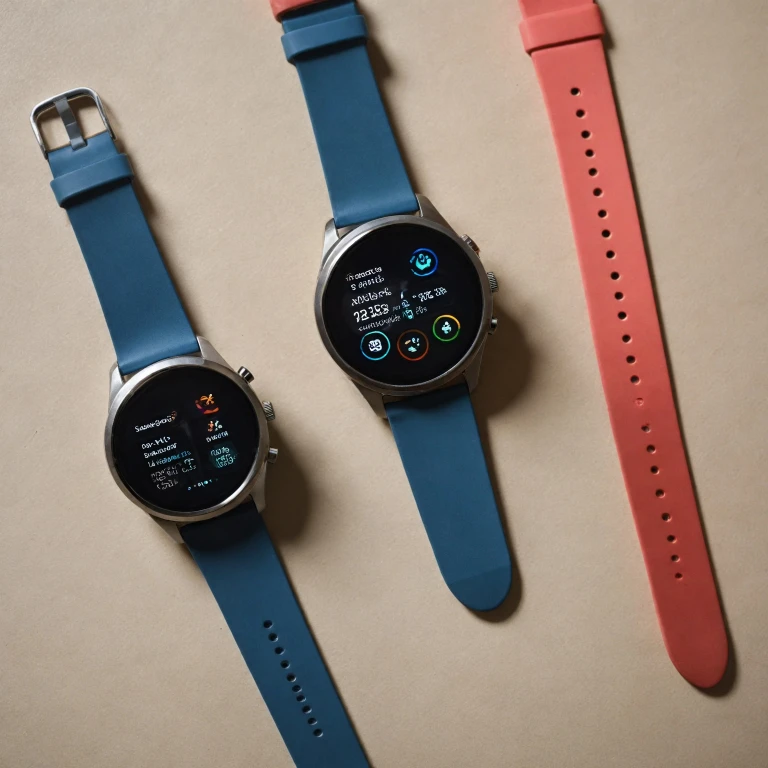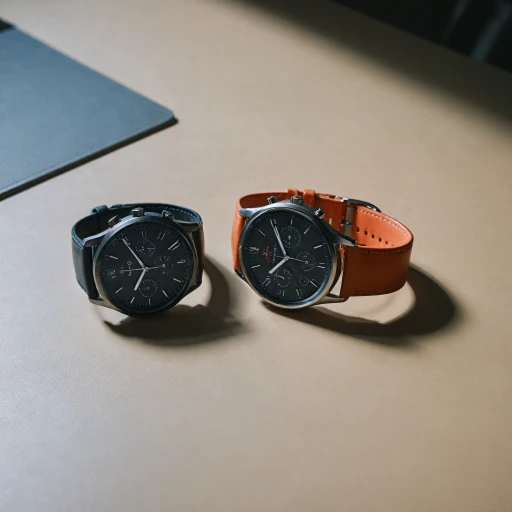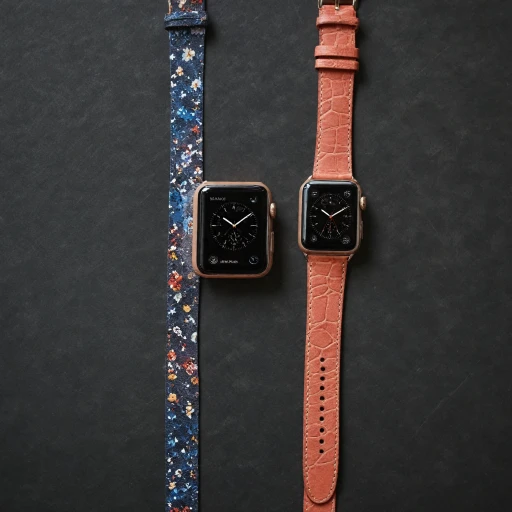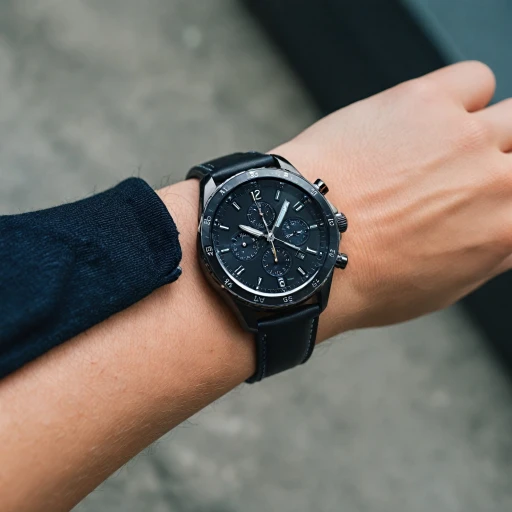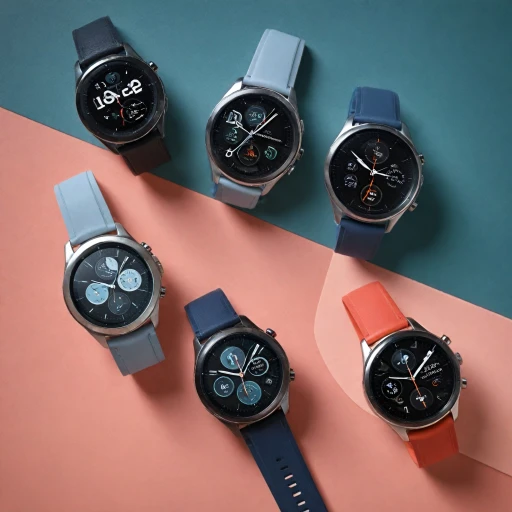Understanding the Core Features
Essential Features Overview
When comparing smartwatch models like the Apple Watch and Whoop, it is important to understand the core features that define their compatibility with user lifestyles and needs, especially in terms of health and fitness tracking. Both devices have become synonymous with fitness enthusiasts and health-conscious individuals alike. The Apple Watch, particularly in its latest series, offers an array of capabilities aimed at enhancing the user experience. It comes with features such as heart rate monitoring, activity tracking, and an integrated app ecosystem. This allows for seamless transitions between different workout modes, such as weight lifting or running, while continuously monitoring metrics like calories burned and heart rate. Whoop, on the other hand, has carved out a niche for itself as a dedicated fitness tracker that emphasizes sleep and recovery. Designed to provide users with in-depth insights into their health status, it tracks metrics like sleep duration, deep sleep, heart rate variability, and respiratory rate to generate a recovery score. Whoop's app provides users with personalized feedback on their activity levels and overall wellness, helping to optimize training and recovery times. Both devices offer sleep tracking capabilities; however, Whoop’s detailed feedback on sleep stages and its ability to offer personalized recommendations for recovery set it apart as a more specialized health fitness device in this area. While both Whoop and the Apple Watch provide essential fitness monitoring and health tracking, they cater to slightly different needs and preferences. The Apple Watch serves as a multifunctional device with a broad range of apps and connectivity options, while Whoop focuses on detailed health insights and data-driven recommendations. Understanding these differences is crucial for selecting the best smartwatch to suit individual health and activity goals.Design and User Experience
Design and Usability: Aesthetics That Make a Difference
When choosing between the Apple Watch and Whoop, design and user experience are key considerations. For those who appreciate a sleek wrist accessory, the Apple Watch offers a polished design that can cater to both fashion-conscious users and tech enthusiasts. Its intuitive interface ensures that navigation through its features feels seamless during day-to-day activities. Meanwhile, the Watch Series has customizable watch faces, adding a personalized touch to match various styles.
In contrast, the Whoop device opts for a minimalist design, focusing on functionality over flashy aesthetics. Its band-like appearance emphasizes comfort and discretion, making it an ideal companion for extended wear throughout the day and night. The Whoop’s lightweight design ensures minimal distraction, a factor fitness enthusiasts would appreciate while engaging in weight lifting or other intense workouts.
User Interface: The Experience Matters
The Apple Watch excels in user experience, thanks in part to its robust app ecosystem. Working in harmony with the versatile Apple app store, users have access to a wide range of health and fitness apps, making it a highly customizable device. Its touch screen and digital crown allow for effortless scrolling and selection, underscoring Apple's commitment to user-friendly design.
On the other hand, the Whoop app stands as the gateway to understanding tracked data. Although the device itself does not have a screen, the app offers a detailed analysis of sleep, recovery, and activity metrics. It presents essential data such as heart rate, calories burned, and sleep tracking in an informative way. This reflective design choice reinforces Whoop's focus on delivering in-depth data insights for health and fitness optimization.
Health and Fitness Tracking Capabilities
Health Monitoring Features
When it comes to tracking health and fitness, the Apple Watch and Whoop both offer a variety of features tailored to help users maintain and improve their wellbeing. However, they approach health monitoring differently, catering to distinct preferences and priorities.
Activity and workout tracking
The Apple Watch is renowned for its broad range of activity-tracking capabilities. It accurately monitors workouts such as running, cycling, and weight lifting, providing detailed data on metrics like calories burned, heart rate, and distance. The watch series employs sophisticated motion sensors and GPS technology, enhancing precision during outdoor activities.
On the other hand, Whoop is designed as a dedicated fitness tracker that excels in tracking recovery and strain. Its focus lies in providing users with a recovery score, helping individuals optimize workout intensity by balancing strain with the body's readiness.
Heart rate monitoring
Both devices feature robust heart rate monitoring capabilities. The Apple Watch continuously tracks heart rate and offers extra data such as heart rate variability and alerts for abnormal heart patterns. Whoop extends this by offering insights into respiratory rate, enhancing its status as a comprehensive recovery tool.
Sleep and recovery
Sleep tracking is another vital component in each device's arsenal. Whoop intensely focuses on sleep by analyzing deep sleep phases, providing a complete picture of sleep quality to calculate a personalized recovery score. Meanwhile, the Apple Watch employs its health app to deliver similar sleep tracking features, integrating data across various activities and devices.
For those comparing the Apple Watch and Watch Whoop, understanding these health-focused features is crucial. Whether your priority is comprehensive fitness tracking or a focus on recovery and performance-oriented metrics, each device offers valuable tools.
Discover more about the best smartwatch options beyond Fitbit to deepen your understanding of how these features can fit into your lifestyle.
Battery Life and Performance
Monitoring Capabilities and Longevity
The battery life of a smartwatch is a crucial factor for anyone relying heavily on their watch for tracking various activities throughout the day. The Apple Watch, especially in its latest series, presents a solid option, offering up to 18 hours of use with standard functionalities. This might be sufficient for daily routines but could require more frequent charging if you make the most of its extensive features, like heart rate monitoring and sleep tracking, overnight.
On the other hand, Whoop is designed with endurance in mind. Rather than a traditional watch, Whoop embraces a fitness tracker approach, focusing on comprehensive health data capture including heart rate variability, respiratory rate, and calories burned. Its battery pack supports the device for approximately five days without needing a recharge. This longevity makes it highly convenient for users who want continuous tracking without frequent interruptions. The trade-off, however, is limited on-wrist interface capabilities, as it doesn't provide a display for direct interaction like other devices.
Whoop's focus on health fitness and recovery score makes it a unique contender in this respect, especially for athletes who prioritize optimizing sleep, recovery, and daily strain evaluation. However, the lack of a screen means users must rely on the whoop app on their companion devices to monitor and assess their data.
The Apple Watch Series offers an intuitive display where users can interact directly with the device. This provides the advantage of immediate feedback on workouts, activity rings, and notifications all at a glance. However, these interactive features do affect its battery life more significantly than Whoop's design.
For those interested in constant health metrics and minimal intervention, the Whoop might be appealing. In contrast, those who want a more versatile gadget with a robust suite of functionality on the go may find the Apple Watch more beneficial. It's essential to weigh how these devices' battery lives align with your lifestyle needs and the level of interaction you desire from your wrist-worn device.
Integration with Other Devices and Apps
Connecting Seamlessly Across Platforms
When it comes to smart devices, integration with other technologies and apps is crucial. The Apple Watch stands out in this regard by offering seamless connectivity with Apple’s ecosystem. Users can quickly sync their watch with iPhones, iPads, and Mac computers, offering a unified user experience. Not only does it work with Apple’s native apps, but it also supports a range of third-party apps, allowing a wide array of functionalities from communication to advanced health monitoring.
On the other hand, the Whoop strap is designed with fitness enthusiasts in mind, focusing on health and performance insights. The Whoop app provides in-depth data on sleep, recovery, and fitness tracking. It assesses metrics like heart rate variability, calories burned, respiratory rate, and more throughout the day. This data-driven approach enables users to monitor their heart rate, deep sleep stages, and even a comprehensive recovery score that can be pivotal for athletes and fitness lovers.
Whoop is integrated less with everyday communication apps but shines in enhancing its core fitness functionalities. Unlike the Apple Watch, which links with various device types and apps, Whoop focuses on being a dedicated fitness tracker and health assistant.
Both devices offer integrations that complement their primary use cases: the Apple Watch for a more generalized smartwatch experience and the Whoop for niche fitness tracking. It’s worth considering what your priorities are—whether it's comprehensive device connectivity or specialized health fitness features—when deciding between these prominent fitness trackers.
